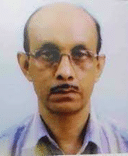Orthostatic Tremor!
The main symptom of primary orthostatic tremor is the occurrence of a rapid tremor affecting both legs while standing. A tremor is involuntary, rhythmic contractions of various muscles. Orthostatic tremor causes feelings of “vibration”, unsteadiness or imbalance in the legs. The tremor associated with primary orthostatic tremor has such high frequency that it may not visible to the naked eye but can be palpated by touching the thighs or calves, by listening to these muscles with a stethoscope, or by electromyography. The tremor is position-specific (standing) and disappears partially or completely when an affected individual walks, sits or lies down. In many cases, the tremor becomes progressively more severe and feelings of unsteadiness become more intense. Some affected individuals can stand for several minutes before the tremor begins; others can only stand momentarily. Eventually, affected individuals may experience stiffness, weakness and, in rare cases, pain in the legs. Orthostatic tremor, despite usually becoming progressively more pronounced, does not develop into other conditions or affect other systems of the body.
Some affected individuals may also have a tremor affecting the arms. In one case reported in the medical literature, overgrowth of the affected muscles (muscular hypertrophy) occurred in association with primary orthostatic tremor.
Causes
The exact cause of primary orthostatic tremor is unknown (idiopathic). Some researchers believe that the disorder is a variant or subtype of essential tremor. Other researchers believe the disorder is a separate entity. Some individuals with primary orthostatic tremor have had a family history of tremor suggesting that in these cases genetic factors may play a role in the development of the disorder. However, more research is necessary to determine the exact, underlying cause (s) of primary orthostatic tremor.
Affected populations
Primary orthostatic tremor affects females slightly more frequently than males. Because many affected individuals of primary orthostatic tremor often go unrecognized or misdiagnosed, the disorder is believed by some to be under-diagnosed, making it difficult to determine the true frequency of this disorder in the general population.
Related disorders
Tremors, involuntary quivering, or trembling movements can occur in association with many disorders. They may occur at any age and may be rhythmic or intermittent. Tremors mainly occur in disorders of the central nervous system, and especially in disorders of the cerebellum or basal ganglia. Examples of cerebellar diseases might be tumors of the cerebellum, multiple sclerosis involving the cerebellum, or a degenerative disease such as spinocerebellar degeneration. Examples of disorders of the basal ganglia include parkinson’s disease (discussed in more detail below), wilson’s disease, and many other rare and common disorders. Tremor may also occur as a result of anxiety, medication, or be of unknown cause (idiopathic).
Orthostatic myoclonus is a rare condition that is similar to primary orthostatic tremor, but myoclonus refers to sudden, involuntary jerking of a muscle or group of muscles caused by muscle contraction or relaxation. Orthostatic myoclonus is characterized by slowly progressive unsteadiness when standing that is relieved by walking or sitting. Some affected individuals experienced bouncing stance and recurrent falls. More research is necessary to determine when orthostatic myoclonus and primary orthostatic tremor are the same disorder or similar, yet distinct, disorders. In rare cases, orthostatic myoclonus may be associated with underlying neoplasm.
Essential tremor is a common movement disorder characterized by an involuntary rhythmic tremor of a body part or parts, primarily the hands, arms, and neck. In many affected individuals, upper limb tremor may occur as an isolated finding. However, in others, tremor may gradually involve other anatomic regions, such as the head, voice, and tongue, leading to a quiver in the voice or difficulties articulating speech.



+1.svg)
